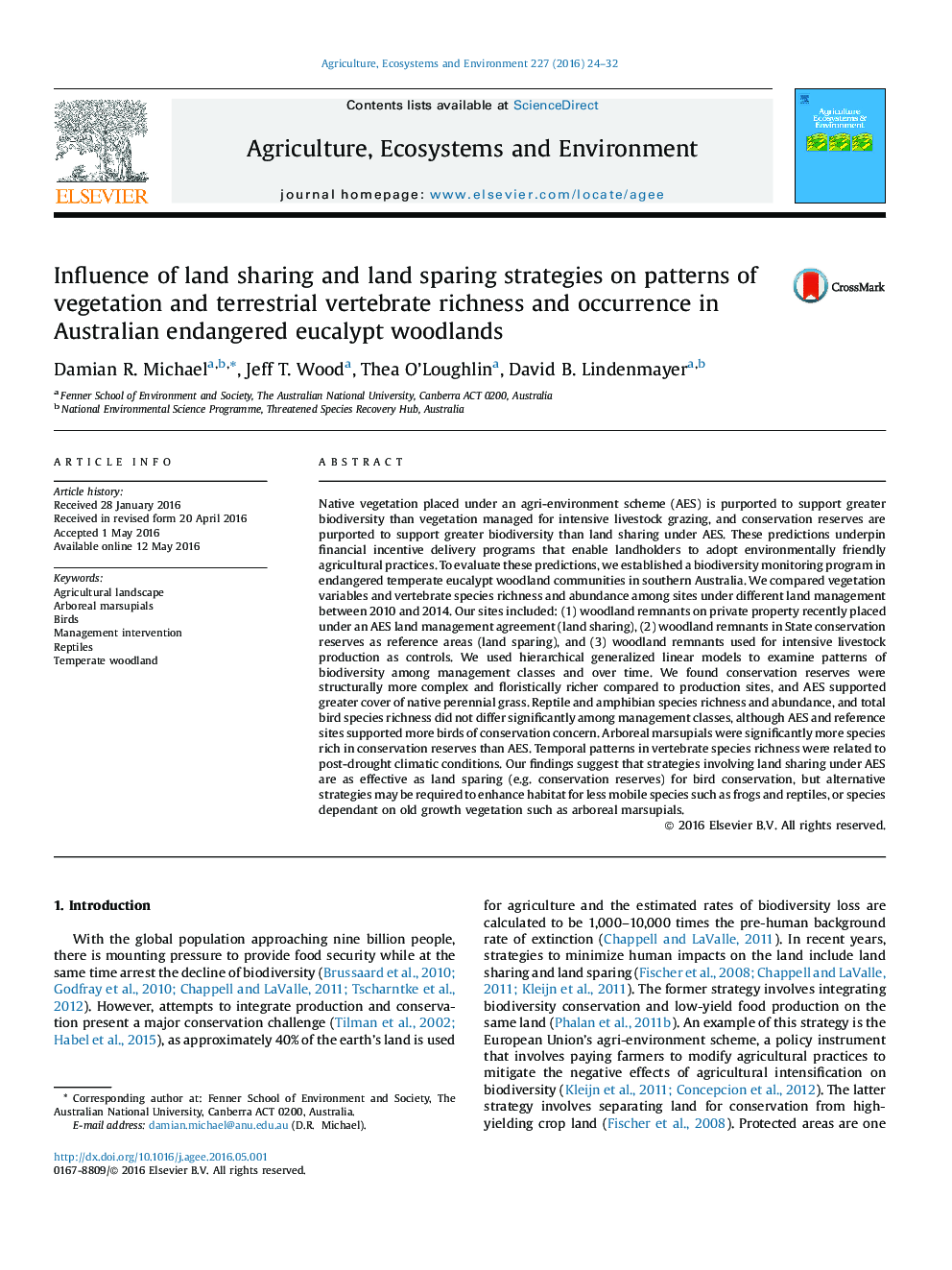| کد مقاله | کد نشریه | سال انتشار | مقاله انگلیسی | نسخه تمام متن |
|---|---|---|---|---|
| 2413523 | 1552025 | 2016 | 9 صفحه PDF | دانلود رایگان |
• Agri-environment scheme supports birds of conservation concern.
• Conservation reserves support a rich assemblage of arboreal marsupials.
• Alternative conservation strategies are required to benefit herpetofauna.
• Climate influences patterns of biodiversity and interacts with land management.
Native vegetation placed under an agri-environment scheme (AES) is purported to support greater biodiversity than vegetation managed for intensive livestock grazing, and conservation reserves are purported to support greater biodiversity than land sharing under AES. These predictions underpin financial incentive delivery programs that enable landholders to adopt environmentally friendly agricultural practices. To evaluate these predictions, we established a biodiversity monitoring program in endangered temperate eucalypt woodland communities in southern Australia. We compared vegetation variables and vertebrate species richness and abundance among sites under different land management between 2010 and 2014. Our sites included: (1) woodland remnants on private property recently placed under an AES land management agreement (land sharing), (2) woodland remnants in State conservation reserves as reference areas (land sparing), and (3) woodland remnants used for intensive livestock production as controls. We used hierarchical generalized linear models to examine patterns of biodiversity among management classes and over time. We found conservation reserves were structurally more complex and floristically richer compared to production sites, and AES supported greater cover of native perennial grass. Reptile and amphibian species richness and abundance, and total bird species richness did not differ significantly among management classes, although AES and reference sites supported more birds of conservation concern. Arboreal marsupials were significantly more species rich in conservation reserves than AES. Temporal patterns in vertebrate species richness were related to post-drought climatic conditions. Our findings suggest that strategies involving land sharing under AES are as effective as land sparing (e.g. conservation reserves) for bird conservation, but alternative strategies may be required to enhance habitat for less mobile species such as frogs and reptiles, or species dependant on old growth vegetation such as arboreal marsupials.
Journal: Agriculture, Ecosystems & Environment - Volume 227, 1 July 2016, Pages 24–32
